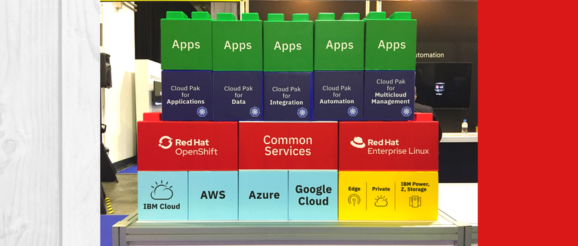IBM, Red Hat accelerate clients’ innovation and growth through cloud-native software

IBM announced at its recently concluded Think Singapore 2019 conference that it has transformed its software portfolio to be cloud-native, enabling clients to take advantage of the newest and best technologies around distributed systems from different vendors. This multicloud versatility translates to faster innovation and growth, as clients can now build mission-critical applications once and run them anywhere.
The first outcome of this transformation are Cloud Paks: Pre-integrated sets of containerized software that provide a common operating model and set of services to improve visibility and control across different clouds. The first five IBM Cloud Paks — touted to reduce development time by up to 84 percent and operational expenses by up to 75 percent — include:
- Cloud Pak for Data – simplifies and automates how organizations deliver insights from their data and provide an open and extensible architecture to virtualize data for AI
- Cloud Pak for Applications – helps businesses modernize, build, deploy, and run applications
- Cloud Pak for Integration – assists in the integration of apps, data, cloud services, and APIs
- Cloud Pak for Automation – aids in the transformation of business processes, decisions, and content
- Cloud Pak for Multicloud Management – provides multicloud visibility, governance, and automation
These packages are easily deployed and delivered and are tailored for specific client use cases,” said Andreas Hartl, General Manager and Cloud Leader of IBM Asia Pacific. “Paks are packaged in the way our customers purchase.”
IBM and Red Hat’s OpenShift
The second outcome of this development is the optimization of IBM’s software portfolio to run on Red Hat’s multifaceted OpenShift, the industry’s most comprehensive Kubernetes platform.
Kubernetes is an open-source system for automating the deployment, scaling, and management of containerized applications, like IBM’s Paks.
OpenShift has been rearchitected to utilize advancements in cloud technology, most notably containers, which allow applications to run quickly and reliably from one computing environment to another. “Containerization is our first commitment for the future,” Hartl said.
Among the services IBM has recently rolled out are the following:
- Red Hat OpenShift on IBM Cloud – enterprises will be assisted by this service of OpenShift on IBM’s public cloud on how they can modernize and migrate to a hybrid cloud environment
- Red Hat OpenShift on IBM Z and LinuxONE – enterprise systems IBM Z and LinuxONE will now benefit from Red Hat OpenShift
- Red Hat consulting and technology services – clients will be advised on how to move, build, and manage their workloads to cloud environments by Red Hat certified-consultants and cloud application services practitioners
The next chapter of business reinvention
Whereas “Chapter One” of digital reinvention dealt with the way a business’s services was experienced by a customer, “Chapter Two” involves taking mission-critical apps such as business intelligence and resource planning and moving them to the cloud. This next phase is where enterprises are currently moving towards.
IBM’s shift in its software portfolio plus its optimization to run on Red Hat OpenShift aims to allow enterprises to modernize their core infrastructure inside out and expedite the shift of their core business apps to the cloud in a consistent and secure manner.
One organization that has made such a shift is financial services provider Primerica. “Primerica has been on a journey to modernize our applications and rapidly deliver new services with the innovations our clients expect,” said Primerica’s CTO and EVP Barry Pellas. “The IBM platform is a key enabler for our hybrid cloud strategy, allowing us to mix public and private clouds to deliver exceptional experiences quickly while keeping our data secure.”
With technology continuously disrupting the way we live, businesses necessarily have to transform their operating models, infuse digital solutions, and keep pace with the rate of change. Cloud technology is a powerful facilitator in the journey to enterprise reinvention.
